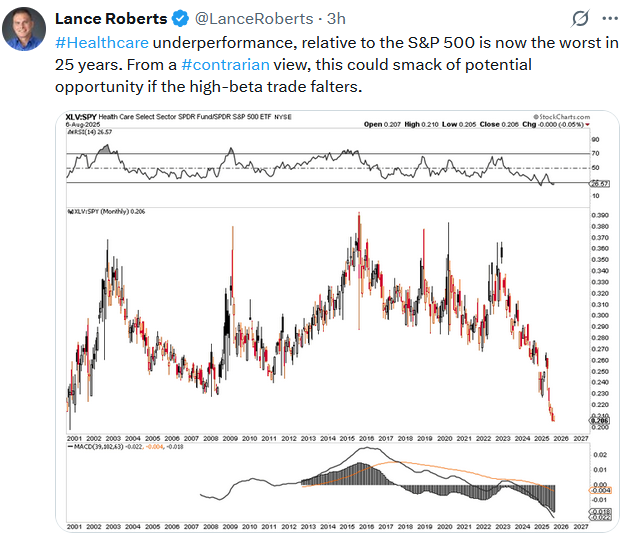Stifel maintains Buy rating on Contineum Therapeutics stock despite MS trial failure
For months, we have been warning that the labor markets are not as strong as the BLS data attests. Six months ago, we wrote:
While labor market data is generally good, there are signs the labor market is at a standstill. Continuing jobless claims are steadily rising and at their highest level in over three years. The JOLTS hires rate is at ten-year lows. While the number of layoffs remains low, employers aren’t hiring either.
Further, in early July, we wrote:
According to the ADP, June saw the largest decline in service sector payrolls (-66,000) since March 2020. While 52k of the losses came from education and healthcare, which tend to be seasonally volatile, the trend is poor. The current estimate for the BLS is +100k. ADP data argues we could get a surprise catch down (in regards to the coming BLS data). Stay tuned!
The point is not that we told you so. Much more importantly, we want to point out that the Fed appears to be data myopic. They over-rely on some data while seemingly ignoring other sources of data. Primarily, they seem to prefer government data on labor and inflation.
Not only has government data proven unreliable at times, but in some cases, it is less robust. For instance, the BLS employment data is compiled via surveys, whereas ADP uses actual paycheck data from its clients. Another example is Truflation, which uses 18 million price data points. Compare that to approximately 100,000 used in the BLS CPI report.
The economic and market risk is that the “data-dependent” Fed is relying on faulty data. Thus, they may wait too long to cut rates, or not cut them enough to stave off a recession. To wit, they waited too long to raise rates and stop QE when inflation was starting to increase in 2021.
The graphs below show how ADP was ahead of the BLS, post-revisions, in predicting the decline in payroll growth.
Eli Lilly Stock Falls On Great Earnings
By all accounting measures, Eli Lilly (NYSE:LLY) had a great quarter. The company had an EPS of $6.31, well above estimates of $5.57. Furthermore, its revenue came in about 5% above what Wall Street was expecting. Such was a 38% year-over-year increase. Recently, we have seen many companies report good earnings, but there has been a negative reaction by investors.
Often, that is a function of weaker-than-expected earnings guidance. However, for LLY, that was not the case. The company increased its revenue guidance by $2 billion and EPS by $1 a share. Below are a few quotes from its CEO, David Ricks:
Our strong results in the second quarter reflect the continued robust demand for our medicines, particularly in the cardiometabolic space with Mounjaro and Zepbound, as well as our oncology and immunology portfolios.
Right now, it’s really a kind of a golden era… the main priority we have is to keep our discovery engine rolling, make important medicines, and get them produced at scale.
The underlying business is super strong.
Along with earnings, the company reported promising FDA Phase 3 trials for its orally taken obesity drug Orforglipron. While great news, the stock fell. Investors were expecting the drug to result in a 15%+ weight loss in trials. The average weight loss was 12%.
Its chief competitor, Novo Nordisk (NYSE:NVO), has shown its test users lost 15% on average using its oral GLP, which is also in Phase 3. NVO is opening higher on the LLY data. The graph below shows LLY has grossly outperformed NVO this year. This is in part because investors think LLY has advantages over NVO regarding obesity drugs.
Tweet of the Day

